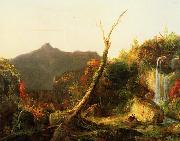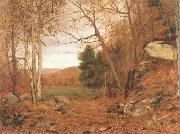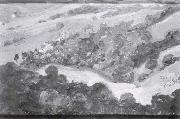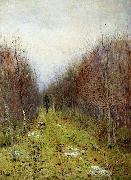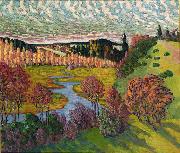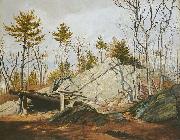Wholesale Oil Painting No Minimum |
|||||||||||
|
|
|||||||||||

|
|||||||||||
|
|
|
||||||||
Thomas Cole1801-1848 Thomas Cole Galleries Thomas Cole (February 1, 1801 - February 11, 1848) was a 19th century American artist. He is regarded as the founder of the Hudson River School, an American art movement that flourished in the mid-19th century. Cole's Hudson River School, as well as his own work, was known for its realistic and detailed portrayal of American landscape and wilderness, which feature themes of romanticism and naturalism. In New York he sold three paintings to George W. Bruen, who financed a summer trip to the Hudson Valley where he visited the Catskill Mountain House and painted the ruins of Fort Putnam. Returning to New York he displayed three landscapes in the window of a bookstore; according to the New York Evening Post, this garnered Cole the attention of John Trumbull, Asher B. Durand, and William Dunlap. Among the paintings was a landscape called "View of Fort Ticonderoga from Gelyna". Trumbull was especially impressed with the work of the young artist and sought him out, bought one of his paintings, and put him into contact with a number of his wealthy friends including Robert Gilmor of Baltimore and Daniel Wadsworth of Hartford, who became important patrons of the artist. Cole was primarily a painter of landscapes, but he also painted allegorical works. The most famous of these are the five-part series, The Course of Empire, now in the collection of the New York Historical Society and the four-part The Voyage of Life. There are two versions of the latter, one at the National Gallery in Washington, D.C., the other at the Munson-Williams-Proctor Arts Institute in Utica, New York. Cole influenced his artistic peers, especially Asher B. Durand and Frederic Edwin Church, who studied with Cole from 1844 to 1846. Cole spent the years 1829 to 1832 and 1841-1842 abroad, mainly in England and Italy; in Florence he lived with the sculptor Horatio Greenough. |
||||||||
|
|
||||||||
Autumn Landscape
Autumn Landscape Painting ID:: 9896 |
1827Oil on canvas 1827Oil on canvas |
|||||||
|
|
||||||||
Jervis McenteeAmerican Realist Painter, 1828-1891, He was an American painter of the Hudson River School. He is a somewhat lesser-known figure of the 19th century American art world, but was the close friend and traveling companion of several of the important Hudson River School artists. Aside from his paintings, McEntee's enduring legacy are the detailed journals he kept from the early 1870s until his death. In his writings McEntee records a detailed account of Hudson River School artists, their day-to-day life, gossip and personal reflections, and the overall arc of the American art world in the second half of the 19th century. He discusses his artistic successes and trials, particularly as money becomes more scarce with the decline in popularity of Hudson River School art. McEntee's journals are now kept by the Archives of American Art, a research center within the Smithsonian Institution. Five volumes of these diaries, from 1872 to 1890, have been digitally scanned, transcribed, and can be browsed in their entirety in the Jervis McEntee Diaries Online. McEntee was born in Rondout, New York on July 14, 1828. Little is known of his childhood. He exhibited his first painting at the National Academy of Design in New York City in 1850. |
||||||||
|
|
||||||||
|
|
Autumn Landscape
Autumn Landscape Painting ID:: 37642 |
mk127
22x28
mk127 22x28 |
||||||
|
|
||||||||
Levitan, IsaakRussian Painter, 1860-1900 Russian painter of Lithuanian birth. He largely painted landscapes (including pastel sketches), which are noted for their emotive or symbolic resonance. His 'landscapes of mood' had a profound influence on Russian landscape painting, to which he introduced a sense of the unity of humankind and nature, and of the spiritual power of the Russian |
||||||||
|
|
||||||||
|
|
Autumn Landscape
Autumn Landscape Painting ID:: 39229 |
mk144
Pastel on carton
30x51xm
mk144 Pastel on carton 30x51xm |
||||||
|
|
||||||||
Julien Dupre1851-1910 French Julien Dupre Location |
||||||||
|
|
||||||||
|
|
Autumn Landscape
Autumn Landscape Painting ID:: 41082 |
mk159
Oil on canvas
51x46cm
mk159 Oil on canvas 51x46cm |
||||||
|
|
||||||||
Egon Schiele1890-1918 Austrian Egon Schiele Gallery Egon Schiele (12 June 1890 ?C 31 October 1918) was an Austrian painter, a protege of Gustav Klimt, and a major figurative painter of the early 20th century. Schiele's body of work is noted for the intensity and the large number of self-portraits he produced. The twisted body shapes and the expressive line that characterize Schiele's paintings and drawings make the artist an early exponent of Expressionism, although still strongly associated with the art nouveau movement (Jugendstil). The most important collection of Schiele's work is housed in the Leopold Museum, Vienna. In 1907, Schiele sought out Gustav Klimt. Klimt generously mentored younger artists, and he took a particular interest in the gifted young Schiele, buying his drawings, offering to exchange them for some of his own, arranging models for him and introducing him to potential patrons. He also introduced Schiele to the Wiener Werkstätte, the arts and crafts workshop connected with the Secession. In 1908 Schiele had his first exhibition, in Klosterneuburg. Schiele left the Academy in 1909, after completing his third year, and founded the Neukunstgruppe ("New Art Group") with other dissatisfied students. Sitzender weiblicher Akt, 1914Klimt invited Schiele to exhibit some of his work at the 1909 Vienna Kunstschau, where he encountered the work of Edvard Munch, Jan Toorop, and Vincent van Gogh among others. Once free of the constraints of the Academy's conventions, Schiele began to explore not only the human form, but also human sexuality. At the time, many found the explicitness of his works disturbing. |
||||||||
|
|
||||||||
|
|
Autumn landscape
Autumn landscape Painting ID:: 47877 |
mk189
1907
Oil on cardboard
18x26.5cm
mk189 1907 Oil on cardboard 18x26.5cm |
||||||
|
|
||||||||
Isaac LevitanRussia.1844-1927 |
||||||||
|
|
||||||||
|
|
Autumn Landscape
Autumn Landscape Painting ID:: 59585 |
Autumn Landscape, 1880
Autumn Landscape, 1880 |
||||||
|
|
||||||||
konrad magikonrad magi(1878 to 1925),was an Estonian landscape painter. He was one of the most colour-sensitive Estonian painters of the first decades of the 20th century, and Magi works on motives of the island of Saaremaa are the first modern Estonian nature paintings. Magi received his elementary art education from the drawing courses of the German Artisans Society of Tartu (1899?C1902.) At the same time, he was keenly engaged in theater, violin, and various sports. Magi continued his art education as an unattached student in Saint Petersburg (1903?C1905.) In the autumn of 1907, he went to Paris. There Magi studied at a free academy. From 1908 to 1910, he lived in Norway. In 1912, Magi returned to Tartu, where he worked as an art teacher. In Åland, he created delicate plant vignettes in the style of Art Nouveau: Kahekesi (Two together; 1908; China ink drawing). In Paris, Magi was influenced by Impressionism and Fauvism, which had a significant impact on his colours: Lilleline vali majakesega (A flower field with a little house; 1908?C1909), Norra maastik manniga (A Norwegian landscape with a pine; 1910). From 1918, the influence of Expressionism is manifest, fostered by Mägi extreme sensitivity and emotional response to the anxious times: Puhajarv (Lake Puha); 1918?C1920), Otepaa maastik (Landscape of Otepaa; 1918?C1920). Also influenced by Expressionism are his big figure compositions Piet?? (1919), Kolgata (Golgatha; 1921). Konrad Magi - Rannamaastik (Beach landscape)Magi new artistic period, begun on a trip to Italy, brought calmer tempers: Varemed Capril (Ruins in Capri; 1922?C1923). Along with nature pictures, he painted flowers and portraits. Magi mostly beautiful female models express the Art Nouveau ideal of beauty: Holsti (1916). In his later portraits from the 1920s, a more serious temper is expressed: Madonna (1923?C1924). |
||||||||
|
|
||||||||
|
|
Autumn landscape
Autumn landscape Painting ID:: 72279 |
Konrad Mägi "Autumn landscape", 1915-1917, oil on canvas, 93,8 x 111,8
cjr Konrad Mägi "Autumn landscape", 1915-1917, oil on canvas, 93,8 x 111,8 cjr |
||||||
|
|
||||||||
Alfred Thompson Bricher1837-1908 Alfred Thompson Bricher (born in Portsmouth, New Hampshire on April 10, 1837; died in Staten Island, New York on September 30, 1908) was a painter associated with White Mountain art and the Hudson River School. He began as a businessman in Boston, Massachusetts before becoming a professional painter. He studied at the Lowell Institute when not working. He also studied with Albert Bierstadt, William Morris Hunt, and others In 1868 he moved to New York City and in the 1870s primarily did maritime themed paintings. |
||||||||
|
|
||||||||
|
|
Autumn Landscape
Autumn Landscape Painting ID:: 82129 |
Autumn Landscape, oil on board, 48.58 x 25.4 cm
Date 1870(1870)
cjr Autumn Landscape, oil on board, 48.58 x 25.4 cm Date 1870(1870) cjr |
||||||
|
|
||||||||
Alexandre Rachmielpainted Autumn Landscape in 1890 |
||||||||
|
|
||||||||
|
|
Autumn Landscape
Autumn Landscape Painting ID:: 91331 |
c. 1890(1890)
Medium oil on board
Dimensions 399 mm x 313 mm
cjr c. 1890(1890) Medium oil on board Dimensions 399 mm x 313 mm cjr |
||||||
|
|
||||||||
|
Alexandre Rachmiel painted Autumn Landscape in 1890 Autumn Landscape c. 1890(1890) Medium oil on board Dimensions 399 mm x 313 mm cjr |
||||||||
|
|
||||||||
|
Prev Next
|
||||||||
|
|
||||||||
|
Related Paintings to Alexandre Rachmiel :. |
||||||||
|
|
||||||||
|
CONTACT US |
